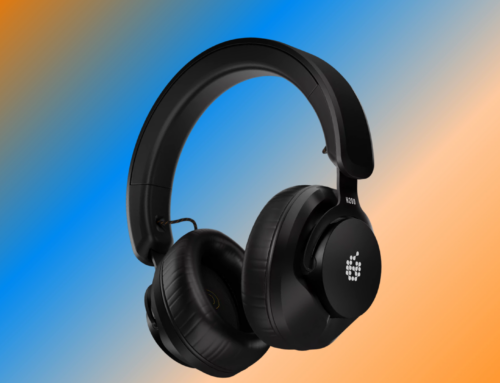Denon introduced its DJ MC6000MK2 controller/digital mixer as a successor to the MK1. While it’s being advertised as being fully integrated with Serato, it enters with a slim yet solid steel design, plenty of features (you might even say too many, given its size), and multiple upgrades.
To start, Denon envisions this piece of gear as its next generation flagship controller for professional use in clubs and for mobile DJs. It offers a sturdy steel chassis body with a four-channel and eight source real-time matrix operational digital mixer with a 24-bit digital and analog interface. As a major asset, it’s fully MIDI compliant – meaning, you can use it with other software programs like Traktor Pro2, Virtual DJ Pro, and OTSAV– and works with your turntable. Along with this, it goes a bit farther than its predecessor with video mixing.

For its size, the MC6000MK2 comes with an impressive array of features, most of which are laid out intuitively and ergonomically over the top panel. Among these are a USB audio interface, with two inputs and outputs; their original audio/video assignable cross-fader function; high-resolution, touch-sensitive jog wheels; a 60mm pitch slider with high 14-bit resolution; file browse navigation keys and a rotary encoder file selector; a 4+4 hot cue/sampler button with a bank selector key; auto/manual looping with loop adjust and roll functions; three effects knobs with on/off buttons and a beats knob selector; large cue and play buttons; a shift key for dual functionality; a vinyl on/off button; a synch button; XLR balanced and RCA unbalanced jacks; two mic inputs; MIDI mappable controls; and independent cue systems for all channels. The system works with Mac OSX 10.6 or higher and Windows XP through Win8.
With four-deck functionality, it puts the most important and oft-used functions right where you think they’ll be – transport, pitch, EQ, loop, cue/sample navigation, and FX controls. This ultimately results in fewer errors during your live performances. As well, it can be used as a fully-functional DJ software controller or a standalone mixer. In all cases, CDJs, vinyl, and auxiliary devices integrate easily.
For these features, Denon adds seven-part LEDs – three green, three orange, and red, all of which are switchable between channels 1/2, 3/4, and master. Cueing, as well, provides split cue and cue/master controls, four of which are used as sample players. For your sets, you have access to auto-looping with crunch/expand controls.
While the MK2 provides access to some of the latest modes, like roll, sensor, and slip, and lets you select tracks effortlessly, it stands ahead of the MK1 in multiple areas. For the, Denon didn’t design the original with mirrored pitch sliders and pitch range keys, and it only came with four effects assign keys; here, the former two are added, while Denon expanded the latter to eight. Among these new features are a Beats Parameter Knob, specifically for controlling beat attributes; an FX top button, for BPM data; and FX mode change.
As well, it wasn’t equipped with an independent vinyl button and had limited capabilities for recording live sets.

Upgrades make the MK2 Serato Noisemap ready. Built-in DVS support turns the controller into an interface for timecode vinyl or CDs. Along these lines, Denon added the Line 3/4 Thru to PC Mode, which lets you record a set (minus any vocals from the mics) into your Mac or PC.
Denon further ventured down the path of video mixing. While the brand initially got attention for its virtual DJing products, the MK1 left much to be desired in this area. However, the MK2 significantly adds to this. The DJ can now program, add, mix, or transition FX and scratch video similarly to audio files.
But even with these improvements and its portable design, the MK2 still lacks in a few areas. For one, its design feels a bit cramped. It looks as if Denon had high ambitions but then tried to add it all to a small controller. Two, it tends to restrict a DJ’s creativity. Specifically, FX just goes by Serato’s rules, there aren’t performance pads or video outputs, and the filters are just for software users – a particularly lacking area. Compared to similar level products by Pioneer, Reloop, and Numark, the MK2 sets limits on what you can do during a set. In this regards, its controls aren’t enough of an advancement over the MK1.
And while the jog wheels perform decently, especially if you’re looking for a feel close to vinyl, they’re a bit on the small side.
Although Denon did go above and beyond with this controller/digital mixer, it’s ideal for a mobile DJ – someone who needs solid, professional-quality equipment with dependable basic functions. For a club DJ, the capabilities might be a bit lacking – especially when other brands’ similar models do more.
If you currently have the MK1, it might not be entirely justified to pick up the MK2. But if you’re looking to upgrade your DJing equipment to something more professional, this controller gives the basics with the reliability and construction you’ve been looking for.




